Helenus: Birkenhead to Birkenhead September to December 1955
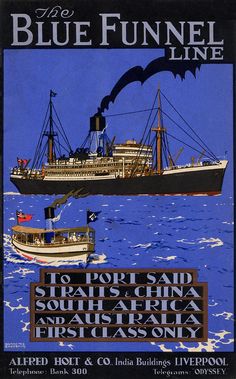
In Ancient Greek mythology, Helenus (Ἕλενος) was a son of King Priam and Queen Hecuba of Troy, and twin brother of the prophetess Cassandra. According to legend, Cassandra had been given the power of prophecy by Apollo, and taught it to Helenus. Cassandra’s prophecies were always accurate but she was doomed to be disbelieved. Like Cassandra, Helenus’ prophecies were always right, unlike Cassandra though, those who heard his prophecies believed him. Helenus vied against his brother Deiphobus for the hand of Helen of Troy, after the death of their brother Paris, in the final year of the Trojan War
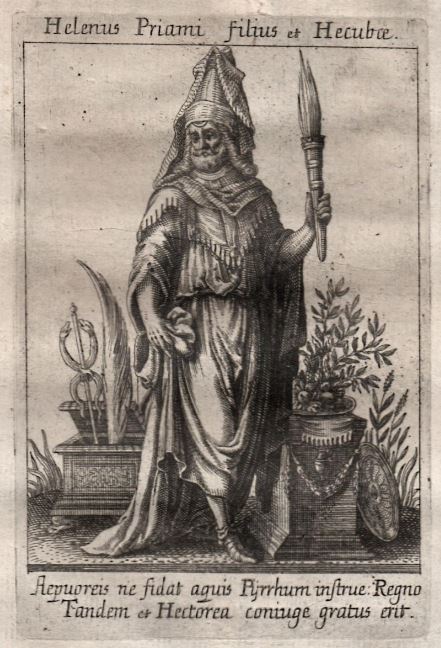
The ships of the Blue Funnel Line were always named after the heroes of Greek mythology, or at least those appearing in the epics written about the Greek myths, Homers’ Iliad and Odyssey, and Virgils’ Aeneid. I don’t think anyone has truly established a specific reason for the fascination of Alfred Holt towards Greek Mythology, however the Victorian age seems to have had a general respect for “Hellenistic” Greek antiquity, as Thomas Gaisford, (Dean of Christchurch Oxford) says of Greek literature in one of his sermons “….not only elevates above the vulgar herd, but leads not infrequently to positions of considerable emolument” (Gaisford, T. Quoted in “Beyond The Hoi Polloi? Ancient Greece and the Victorians” Broughall, Quentin, J. June 22nd 2015. Source: The Victorianist: BAVS Postgraduates. Online @ victorianist.wordpress.com/2015/06/22/beyond-the-hoi-polloi-ancient-greece-and-the-victorians/ accessed 23/01/2021) Where Mr Broughall goes on to highlight eminent Victorians such as Elizabeth Barrett Browning, William Gladstone, George Eliot, Matthew Arnold and Oscar Wilde as being Hellenists at heart. If nothing else, an eminent Victorian engineer such as Alfred Holt is highly likely to have been immersed in the pre-eminent cultural references of his society peers……..
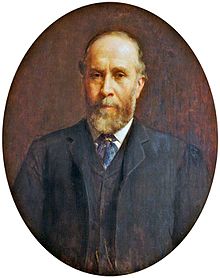
But enough about Greek Mythology & the Victorians…..The journey of my father around the world started, as noted elsewhere in this blog, on the 03rd September 1955 at Birkenhead, actually out of Gladstone Dock No 2 on the Mersey River. It is entirely possible Blue Funnel Cadet Engineer Ian Jones, 18 years old and just over a month off his 19th Birthday, would have arrived on the Liverpool Overhead Railway station platform. Long gone now, the Liverpool Overhead line, a marvel of the Victorian age, terminated at the Southern end of Gladstone dock and would have been the obvious choice for those arriving to join Blue Funnel Ships as crew or passengers from a wide range of Liverpool areas
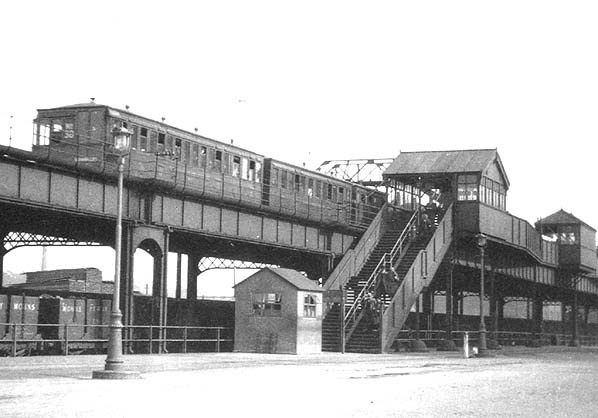
Dad was in for a rare treat, Helenus was bound for Australia, her regular route, and it must have seemed like all Dads’ birthdays had come at once, bearing in mind this would be his first trip abroad. I know the training at Blue Funnel’s Aulis centre would have prepared him for whatever he would meet in Helenus’ huge engine room, but it is harder to imagine what was going through his mind meeting his colleagues and fellow engineers, below decks, as the newest aboard and the lowliest of cadets? Essentially a 1st trip apprentice, exciting and somewhat daunting, I have no doubt. The Helenus was bound for the Suez Canal and Port Said first, out with a general cargo in her holds and, not as unusually as you might think, Two Locomotives on her decks. Helenus must have been a surreal sight to those walking the shores of the Mersey at Bootle, as she headed impressively out of the Mersey estuary with Two steam trains firmly secured to her decks, a positive manifestation of the embodiment of the steam age!
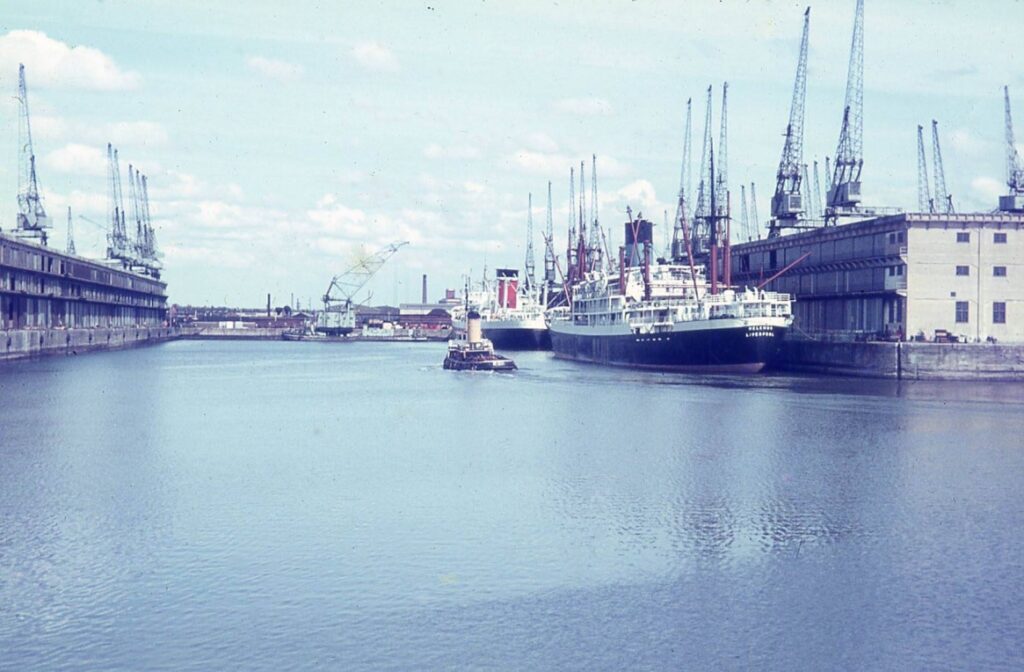
Port Said was established in 1859, named after its founder Sa’id of Egypt, with a population of around 150 people, it would not be for another 10 years that the Suez canal would open, in November of 1869, allowing fast trade routes from the Mediterranean Sea to the Red Sea cutting out the need to sail the South Atlantic around Cape Horn. It would then take until 1904, when the railway from Cairo reached the port, for real trade to begin and for Port Said to start to attract a significant commercial community of 11000 people, the largest of the European communities being Greek
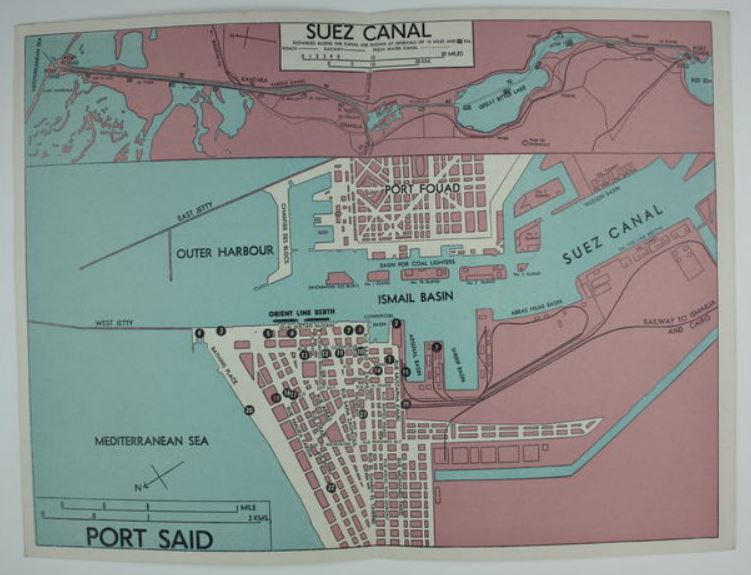
When my Dad sailed through the Suez en-route to Australia the Port Said Stadium was opening, inaugurated by the Egyptian Minister for social affairs, on behalf of the Egyptian President, Gamal Abdel Nasser, Dad would narrowly miss out on the results of the growing tensions in the area. It wasn’t until 1956, when Nasser nationalised the Suez Canal Company in the so called Suez Crisis, that Britain would join Israel and France to invade the region, battling largely in and around Port Said, to secure The Suez Canal and the right to sail it unhindered. It would be 20 years after that conflict that I met a paratrooper who lost half his leg in the conflict to a mine, Frank Sutton appeared in many of the British Limbless Ex Serviceman’s Association (BLESMA) Adverts in the 70’s and 80’s and was still picking bits of leather out of his remaining leg (remnants from his boot) even then, Frank became a good mate, sharing many of his stories from the day and was instrumental in my choice to join the army
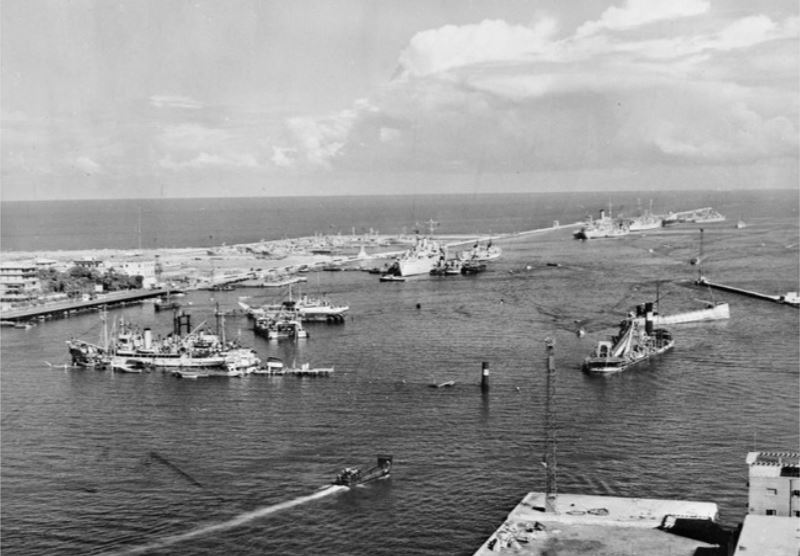
From Port Said Helenus would have made her way to Aden to bunker up, or re fill with fuel for those who aren’t familiar with some of the nautical terminology. Fueling up a ship of Helenus size would be no small thing, she carried between 2,190 and 2,396 tons of oil fuel, in double bottom tanks, side compartments and settling tanks and carried water ballast in several compartments at the fore peak and aft peak, totalling around 3,500 tons. Helenus was a Harland and Wolff (Belfast) ship, the same yard that built Titanic, however Helenus was a typical Alfred Holt “Lloyd’s A plus” Class Vessel, unlike the Titanic…… for those of you who love facts this is Helenus’ sheet:

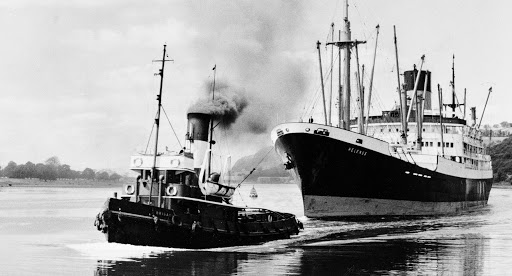
A little more general detail is provided by Norman Middlemiss in his piece in the on-line magazine Shipping Today and Yesterday (Middlemiss N: “Blue Funnel Line ‘P’ and ‘H’ Classes of 1949/51” in shippingtandy.com accessed 29/01/2021) “The ‘H’ class steel hulls were seven feet longer and one foot wider than the ‘P’ class and were subdivided by nine bulkheads into seven holds and seven hatches. The latter measured 29 by 22 feet, 27 by 24 feet, 27 by 22 feet, two of 26 by 22 feet, one of 18 by 12 feet, and one of 14 by 12 feet. The foc’stle of all of this quartet measured 47.0 feet, the Bridge Deck was of 265.0 feet in length, and the poop deck was 26.0 feet in length. The hulls were of riveted and welded construction and carried insulated compartments for refrigerated cargo, and a deep tank was fitted ‘midships for the carriage of latex and vegetable oils with a flashpoint above 150 degrees Fahrenheit. The cargo handling gear consisted of a heavy lift derrick of 50 tons capacity on the foremast to serve number two hold, four ten tonners, fours even tonners, and sixteen five tonne derricks, a total of 25 derricks, all operated by 25 Laurence Scott winches varying from three to eight tons capacity”
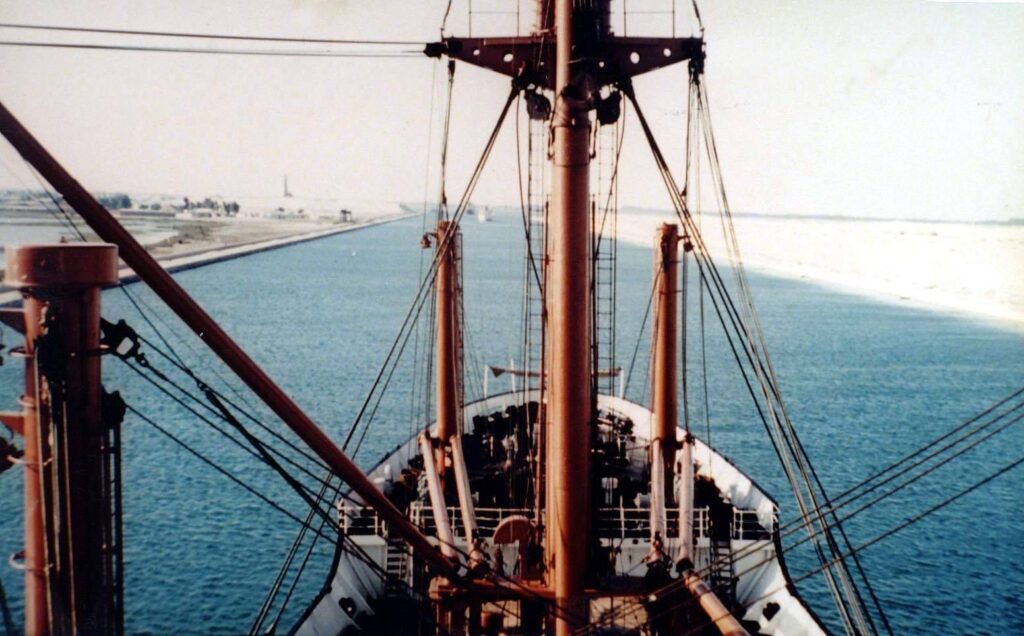
Mr Middlemiss goes on to provide the detail missing in the table above in respect to the Engines of Helenus, although I haven’t been able to confirm this, either with Dad’s limited notes and correspondences, nor in the wider Blue Funnel arena. Helenus is noted by Mr Middlemiss as being fitted with “Parsons steam turbines of 15,000 shp at 106 rpm, double reduction geared to a single screw shaft, taking steam from two Foster Wheeler water tube boilers operating at 570 pounds/sq. inch and 850 degrees Fahrenheit to give a service speed of 18.5 knots and a ‘flat out’ speed of over 20 knots. The turbines either had impulse blading or reaction blading depending on use for ahead or astern steaming, and the boilers had air heaters and economisers, together with the necessary fans for forced and induced draught” I had initially thought Helenus may have been fitted with a J. G. Kincaid & Co variant of the Burmeister & Wain Opposed Piston Engine however that was a coincidental piece and does not specifically state Helenus as a platform, unlike Mr Middlemiss to whom I am indebted for his knowledge and detail!
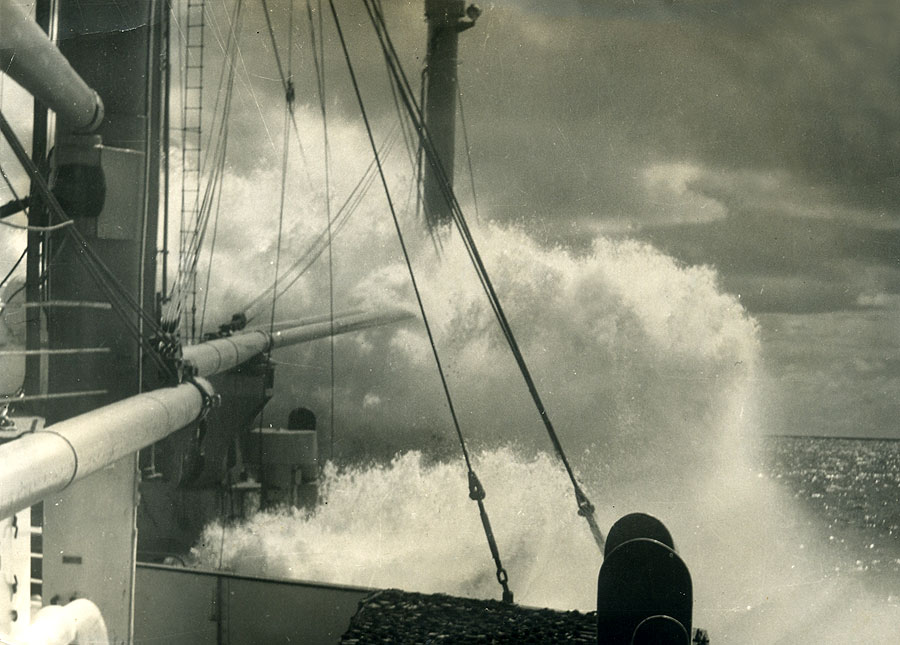
So what was Aden like in 1955 and what would the young cadet Ian Jones have seen whilst re-fuelling Helenus then? Well Aden began as a British Port mainly kept as a protection from pirates en-route between the UK and India and, following the opening of the Suez Canal, it served as a coaling and fuelling station for shipping up until the fall of empire in India and its follow-on independence in 1947
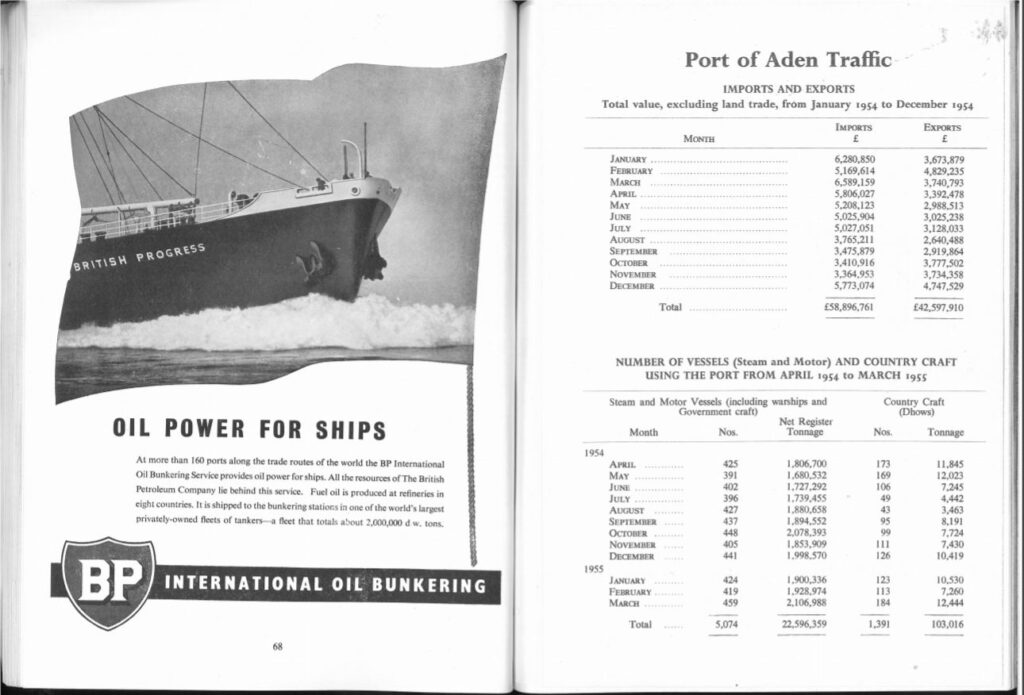
The Egyptian President, Nasser, was having a profound effect on the Arab nations and in 1955, although the British still ruled the region, things were (as seen in the Suez Canal incident of 1956) getting distinctly “touchy” all around the area. Aden was no different, the British had a small presence there at the Airfield at RAF Khormaksar near the Port of Aden, where BP had an oil refinery. The “Aden Protectorate” was a huge area nearly as big as England, comprising of the Eastern and Western protectorates, basically “bandit country” awash with local Arab tribal disputes, the British forces in the area trying to resolve tribal differences whilst at the same time monitor the borders between Aden, Saudi Arabia and Yemen. Indeed the British Army were returned to Aden in July of 1955 following tribal incursions by Yemeni armed insurgents, and ambushes, one of them wounding a British assistant advisor to the Western Aden Protectorate, all in all Aden was becoming something of a trouble spot at the time!
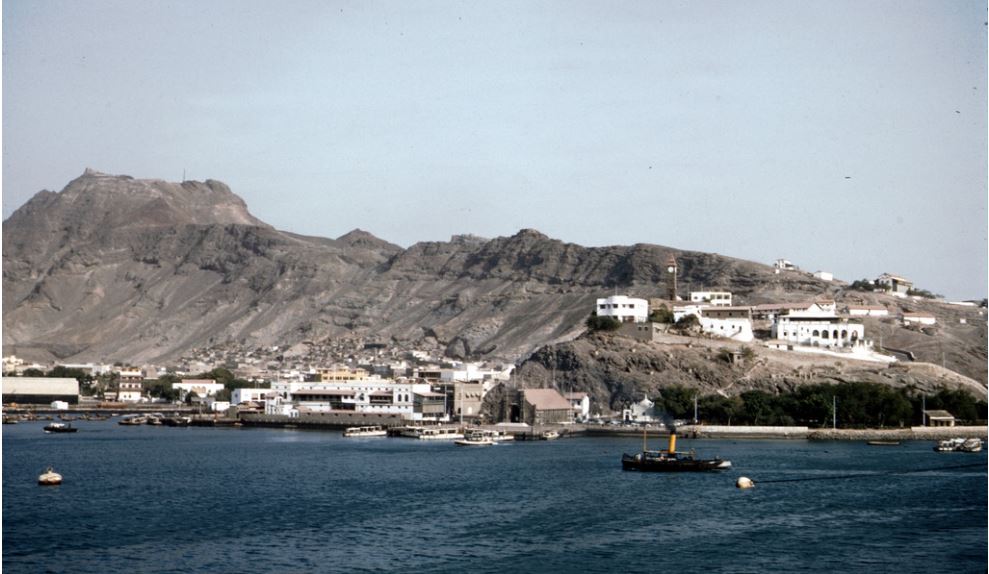
The British Army took control of Aden officially in 1956, taking over from the RAF regiment who were responsible for the protection of the Airfield at Khormaksar and the Port area up until that year. The RAF Regiment had just lost a wing commander and a levy soldier in an ambush at Wadi Hatib, with many others wounded. Squadron Leader Archibald Stewart commanded the evacuation of those soldiers, winning the Military Cross for his “sterling qualities of leadership under considerable pressure and amidst the chaos of the fight” (RAF Regiment Heritage Centre: “Squadron Leader “Jock” Stewart MC”. rafregimentheritagecentre.org.uk on-line resource accessed 06/02/2021), whilst under very accurate sniper fire. In all eight were killed and seven more seriously wounded before the patrol, guided by Squadron Leader Stewart, reached safety
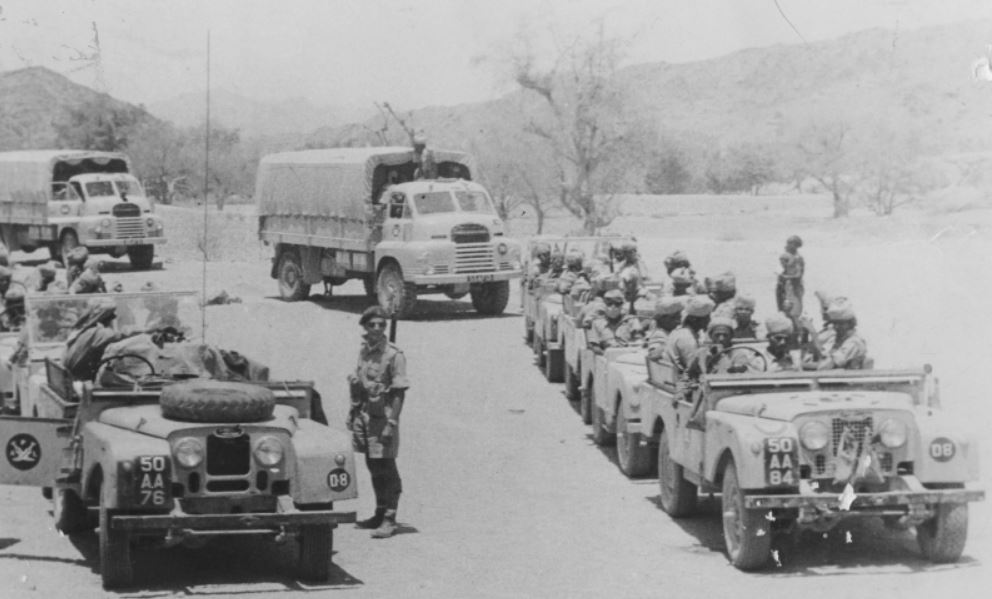
I doubt there was very much time between bunkering the Helenus and the journey on to Australia. The Blue Funnel line was not a cruise operator and, despite the passengers often carried on her ships right into the 1970’s, there would be issues surrounding passenger safety in the circumstances, and likely restrictions on runs ashore too. I never heard my Father speak of Aden and suppose from that either he didn’t go ashore or, if he did, there was perhaps little of note beyond the bunkering dock and the port area. If nothing else though, Aden would have been the first port outside of Liverpool that my father had set foot in and it would have definitely left an impression following the trip through Port Said and up the Suez
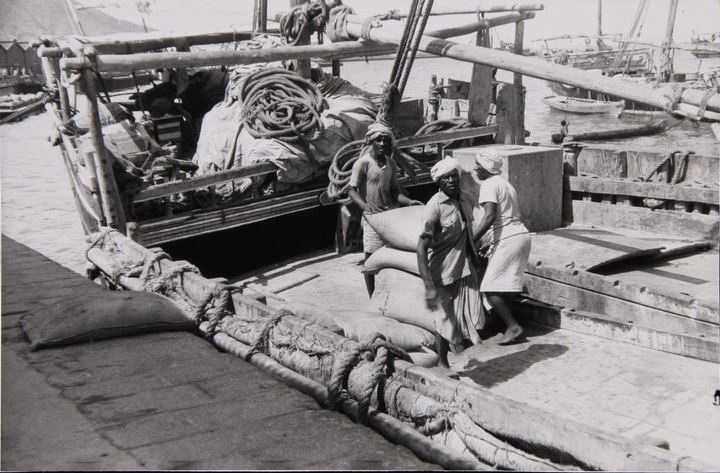
Following the brief stop in Aden Helenus was bound for Albany, finally reaching Australia and the major open ocean stage of her journey, it would be necessary to top off her bunkers again and it seems Albany was the port of choice for Bluey’s on the Australian run to do so. Albany is surrounded by beaches and nowadays is a major tourist location, in 1955 Albany was renowned for whaling, the major employment of locals at the time. Albany only closed its whaling station down in 1978 making it the last whaling station in the Southern hemisphere and, indeed, the last ever English speaking whaling station. Albany sits within King George Sound on the Southern Coast of Western Australia, it would be Princess Royal Harbour Helenus was bound for, with the City of Albany located next to the Port, sitting at the base of Mount Adelaide. The approaches to the port are between Point Possession and Point King through a channel called, oddly, Ataturk Entrance

From my time living in Istanbul I know “Ataturk” to mean “Father of the Turks”, a title given to Mustafa Kemal (born Ali Rıza oğlu Mustafa, in Thessaloniki), by the Turkish people in honour of his defence of Gallipoli against the Australian and British forces in the 1914-1918 war. There is a memorial piece elsewhere on this site in the “Best Dives Ever” section that might lead you to conclude that the Australians named the channel in honour of Mustafa Kemal Pasha, for his humility in victory and his compassion for those who attacked his lands. Kemal Atatürk is widely credited as having said of the Allied Army dead “There is no difference between the Johnnies and the Mehmets to us where they lie side by side in this country of ours. You the mothers who sent their sons from far away countries wipe away your tears. Your sons are now lying in our bosom and are in peace. After having lost their lives on this land they have become our sons as well” It would not be hard to see why Albany would honour such a sentiment and such a man in this way, it is also telling that Albany was the port of departure for troopships going to join the allied armies in the First World War

From Albany Helenus was bound for Adelaide, further down the coast, Adelaide was Australia’s third largest city and was prosperous and had benefited from the industry required in World War 2 with US car manufacturers Chrysler and General Motors having factories there. In 1955 Adelaide was Australia’s “Motor City” and its infrastructure was growing to meet the need, new pipelines and a new airport had just opened at West Beach and Adelaide’s’ shipbuilding industry, blast furnace and steelworks, had expanded at the nearby port of Whyalla. At some point during the journey down the Australian South Coast Helenus’ 5th Engineer developed Appendicitis and was put ashore for treatment, leaving a gap eventually filled by John Chapman for the return journey. John held a Chief Engineer’s ticket and, co-incidentally was returning to the UK at the time (E.W.Forshaw 6th Engineer Helenus: to C Jones in “Blue Funnel for Old-timers” Facebook Page)
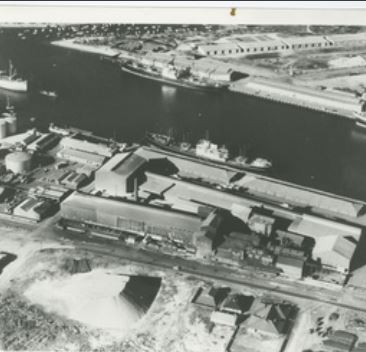
Adelaide had been built to a design proposed by Colonel William Light (his memorial sits on a local hill called Montefiore, looking out over the bay), it is a grid pattern, based on Greek and Renaissance ideas and influenced by the lay of the American city of Philadelphia, with wide avenues and public parks, making it a very pleasant city to live and work in. Unlike Albany in 1955, Adelaide would have had a more urban appearance, a heavier density of population around its shoreline and perhaps more to offer those going ashore between watches, it certainly had some wonderful beachfront along the coast as the photo of Hallet Cove testifies?
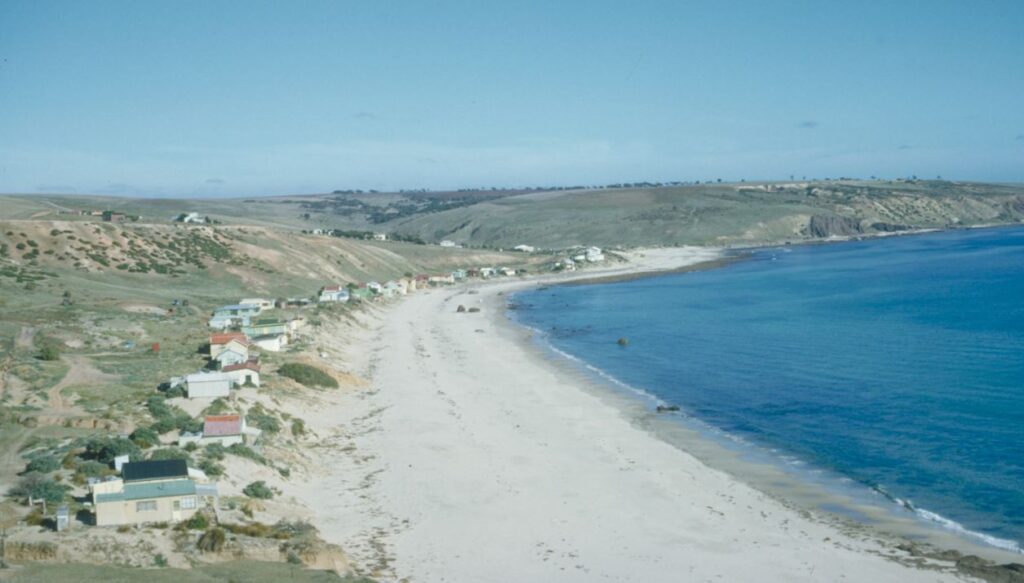
Adelaide was to be quickly followed by Melbourne, in 1955 Australia’s first state Governor Charles Hotham was inaugurated, the Melbourne Museum opened and Majestic Class, Light Fleet Aircraft Carrier, HMAS Melbourne was commissioned. Although she had been laid down towards the end of World War 2 (15th April 1943) and launched partially complete in 1945, work on her had stopped until the establishment of an Australian naval fleet air arm (1946), to mimic the British Fleet Air Arm. At that point the “Majestic” along with her sistership “Terrible” (surely not the most appropriate name for a ship…..) were approved to be converted into Aircraft carriers and the “Modified Majestic Class” carriers were born. Dad wouldn’t have seen the HMAS Melbourne on his trip as she didn’t arrive in Australia (Freemantle) until 23 April, St George’s Day, 1956 after making the very same journey the Helenus had taken via Suez, but he would have surely known of her construction and her anticipated delivery
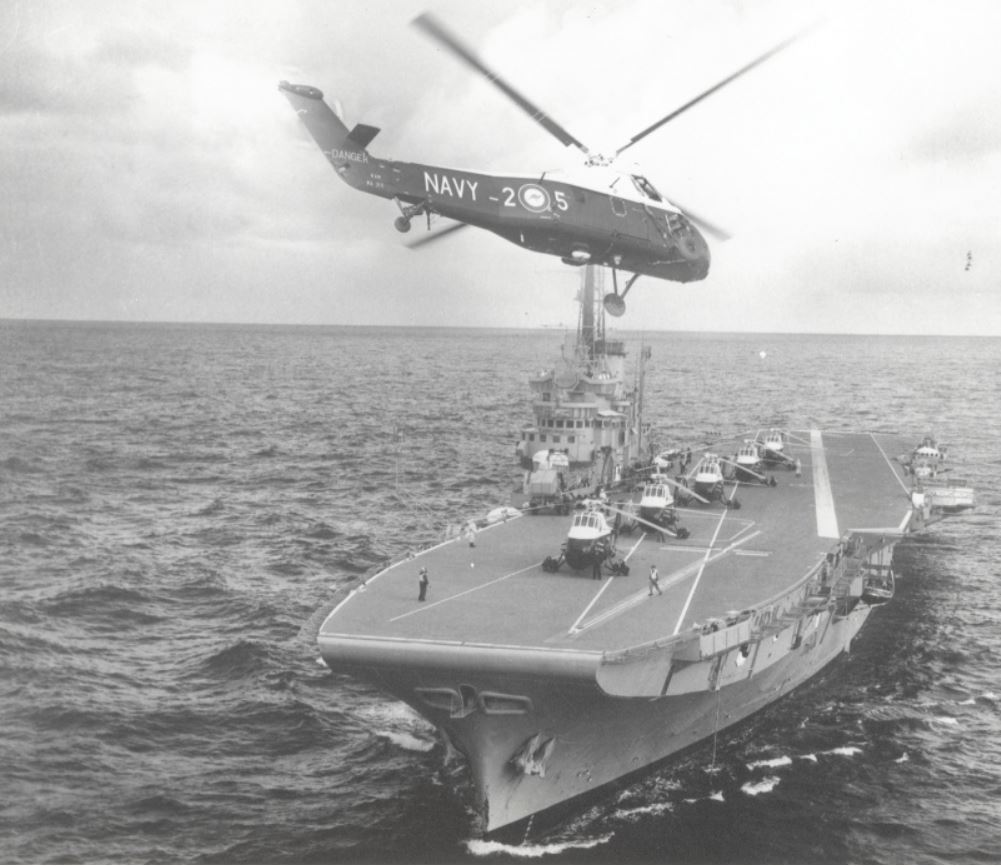
Melbourne was a cosmopolitan city and had thrived during and after WWII, essentially a modern and well established city where life would not have been so far from that in Liverpool, home of the Blue Funnel Line and Dad’s home town. The city streets would have been a reminder of home, perhaps enough to make a young lad a little homesick, but perhaps a place to explore and enjoy as a 19 year old half a world away from Leather’s Lane in Halewood, something vaguely familiar, but something completely different to Dads’ actual home
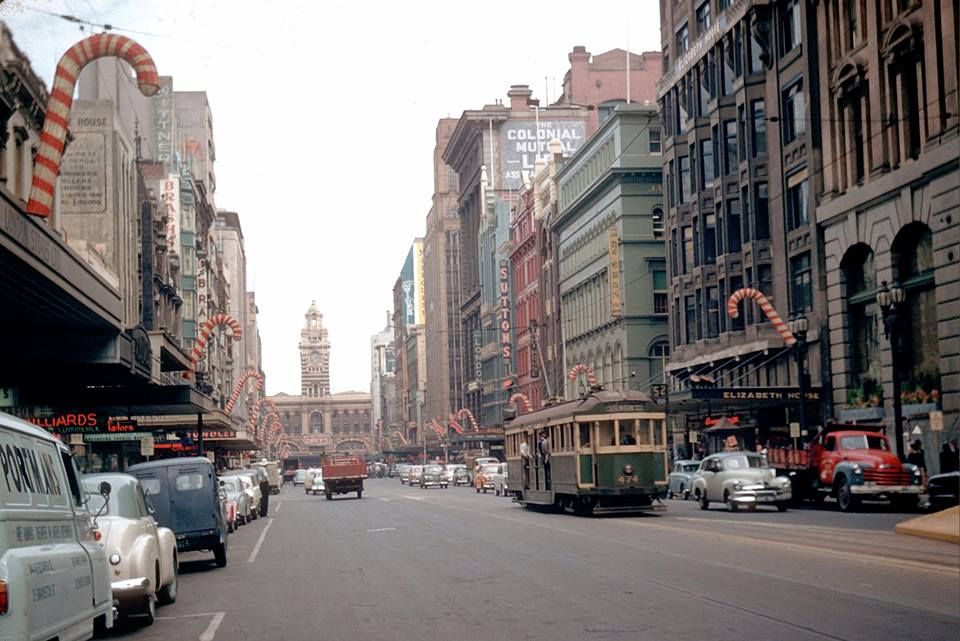
The stop in Melbourne over, Helenus made her way to Sydney, capitol of New South Wales, something that might have amused Dad, half our family being very recent Welsh descendants, my Grandfather Glynn, his father, actually being Welsh…. When Helenus docked she would have been on Walsh Bay in one of berths 1 to 10, just a short walk from Circular Quay, St Georges, as those on Facebook’s “Blue Funnel for old timers” page will attest, and to whom I am especially grateful for the route and cargo details, along with the ports of call and some of the photo’s in this piece. August of 1955 had seen record rainfalls in Southern Australia, not for the first time that year, back in February lives were lost in the Murray-Darling Basin when the Hunter River at Newcastle, North of Sydney, burst her banks. Around Sydney, by August, there was significant flooding after further heavy rainfall, not the weather you’d expect in Australia by any stretch of the imagination. It might amuse those of a certain age to note that Dame Edna Everage, that Iconic Australian Diva, made “her” first appearance on the stage (Melbourne) in 1955, although I don’t believe Australia’s Cultural Attaché Les Patterson, by far the more eloquent of the two, appeared until later

Whilst the iconic Sydney Harbour Bridge had long since been forged and transported from Tyneside, now elegantly spanning the entrance to Sydney Port, there was nothing on the point at Bennelong but the Fort Macquarie Tram Depot. The Depot was eventually demolished to make way for, what is now the most recognizable cultural reference in Sydney, the Sydney Opera House. Work would not begin on that engineering “miracle of its time” until 1959, following Danish architect Jorn Utzon winning of a competition to design “a National Opera House at Bennelong Point” in order to “…mould a better and more enlightened community” (J.J. Cahill, NSW Premier. Addressing a conference to construct an Opera House, Sydney. 1954) The eventual construction of Sydney Opera house would, as public edifices often do, go way over budget, and eventually see Jorn Utzon leave Australia, never to return, in 1966 following payment being wrongly withheld by the Australian Government
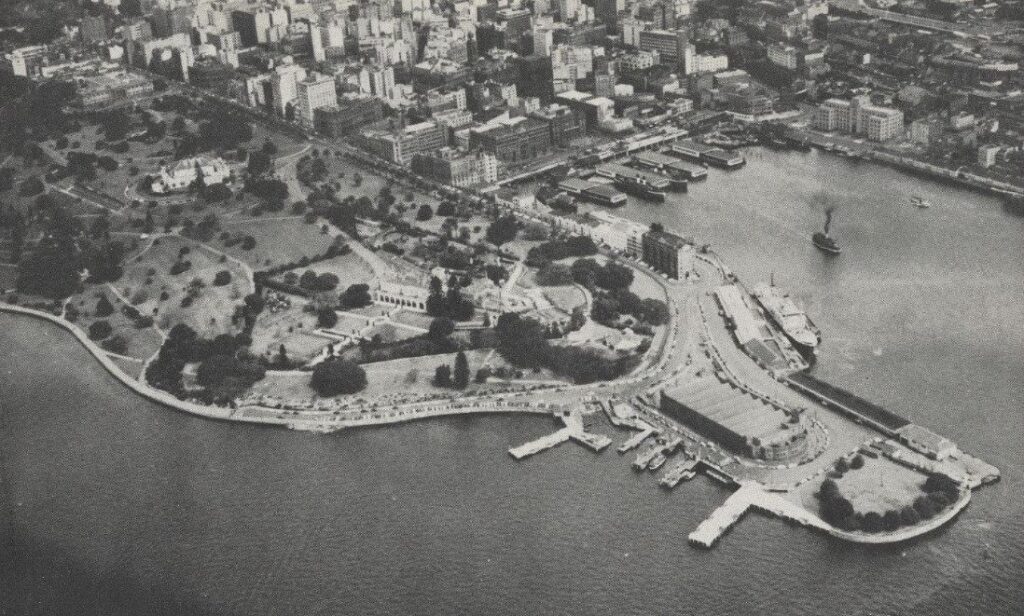
Sydney had notoriously begun life in 1788 when Captain Arthur Phillip disembarked his cargo of some 1500 passengers, mostly convicts, in order to take on water from “Tank Stream” and thus establishing Port Jackson, or as it has long since become known, Sydney, as the first penal settlement in New South Wales. The Sydney Port Authority can trace its management of the harbour back to the first appointed harbourmaster in 1811, he would have been responsible for the commerce of the wharf, its privately owned piers and buildings, and the loading and unloading of those ships berthing along the quays
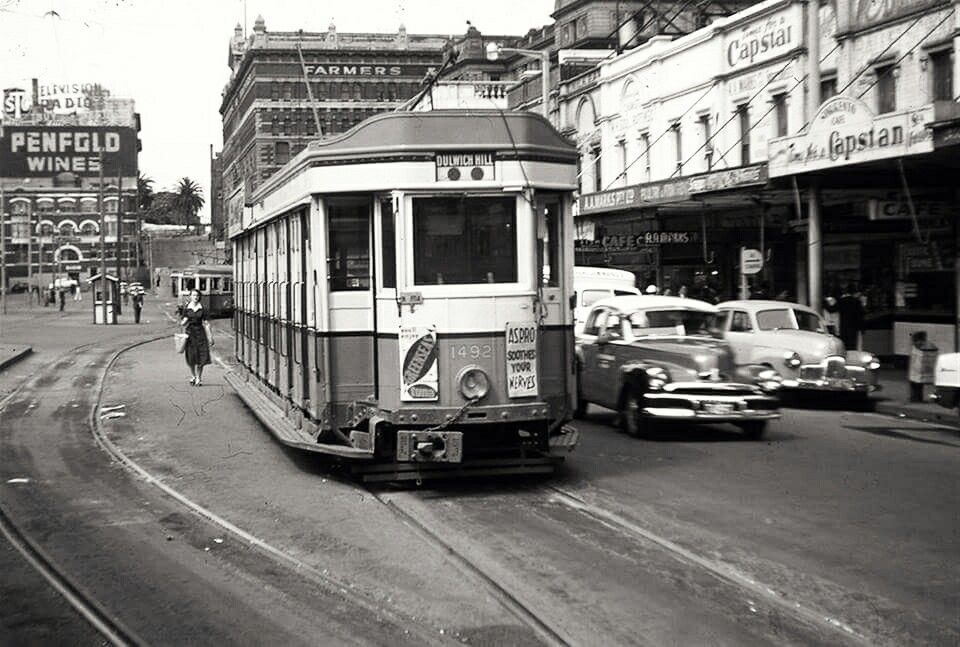
It would have been the wharf’s and quays at Walsh Bay where Dad docked with Helenus, looking at the photo of the Blue Funnel dock it is hard to believe that was 1955, if it wasn’t for the high rise flats behind the wharf you would be excused for thinking this was the 1920’s. There were plenty of places to see in Sydney but if the “chat” on the Blue Funnel for old timer’s page is anything to go by then the “Captain Cook” and the “Lord Nelson”, close to the Sydney Harbour Bridge, were popular with Blue Funnel employees, as was the “Ship Inn”, a little closer, situated at Circular Quay. It’s my ambition, one of the “Bucket List” activities I’m determined to get through, to eventually see if any of these places are still there, and have a pint somewhere Dad would’ve undoubtedly visited
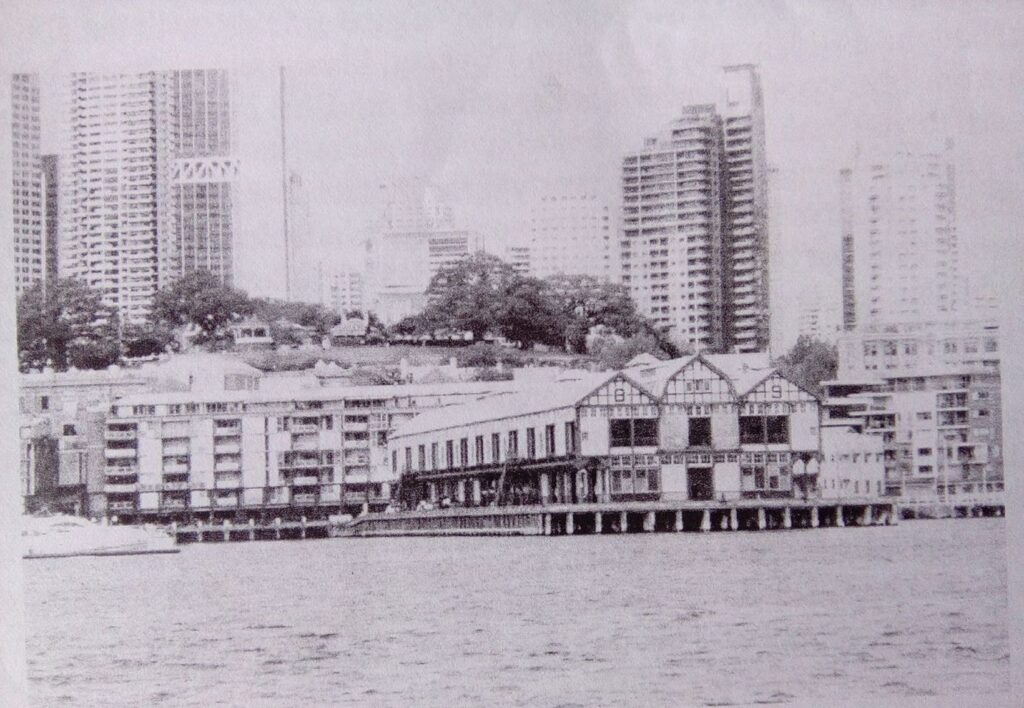
Leaving Sydney the Helenus was bound for Brisbane, her last stop before heading back home to Liverpool. Brisbane was a port on the rise in 1955, it had been established as a river port back in the years following Captain Cook, surrounded by sheltered Salt Marsh and Mangrove, the river basin must have been a convenient source of fresh water at the time. It would not be until the building of the Dry Dock at South Brisbane in 1876, that Brisbane could take advantage of the shipping visiting Australia, needing maintenance and repair following epic journeys from all over the globe
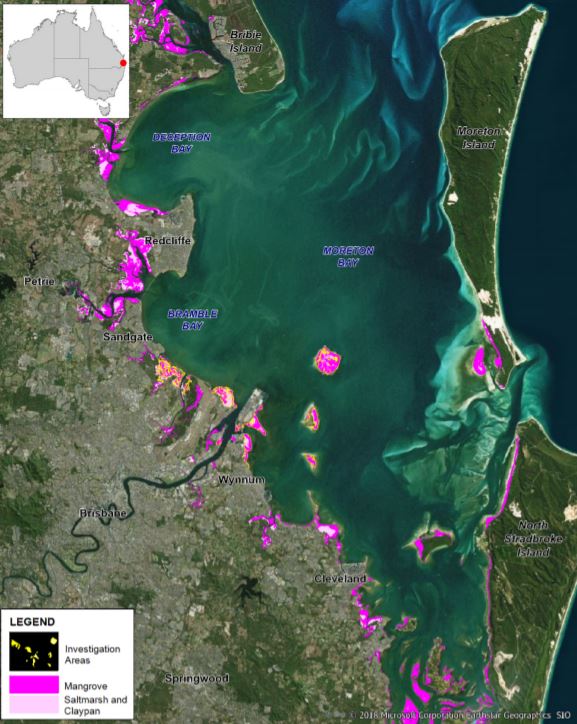
Brisbane’s Dry Dock completed in 1881 with the spoils taken from the construction being used to construct parts of Brisbane town streets, it would not be until the 1940’s and World War II that the dock was extended downstream, and Cairncross Dock was added. By the 1950’s Brisbane had a large city hospital, an impressive Museum and Art Gallery and a popular surf club at Mooloolaba on the Mooloolah River and by 1955 Brisbane was a well-established port of call for the Blue Funnel line ships. Global Industry had arrived at Brisbane, Caterpillar, the American construction equipment giant was opening its factory there, and things were getting bigger and better for Brisbane! Did Dad visit the Surf Club or perhaps the Museum…..?
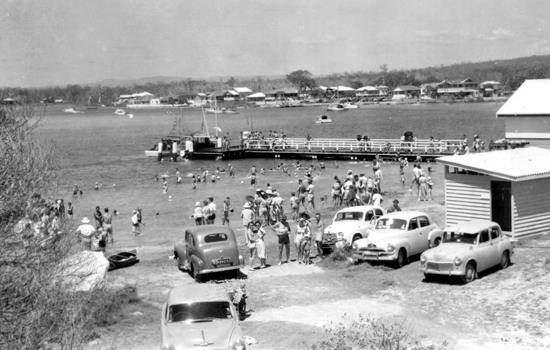
I won’t ever know if Dad got to Mooloolah River, but if there was sufficient time ashore, without the worry of watches and keeping Helenus’ engines and transmissions in pristine condition, they are just the kind of places a 19 year old was likely to want to see in 1955! I am grateful to Eric (E.W.) Forshaw of the Blue Funnel Old Timers Facebook page for the information on Dad’s 1955 trip, Eric was 6th Engineer on the trip and would have at least had a passing acquaintance with my father, although just how much I don’t know and Eric doesn’t remember. I suppose a cadet engineer on his first ever trip abroad would be more of a liability to those responsible for the smooth running of such a complex and prized ship as Helenus, but everyone has to learn, and cadet’s, like anyone else, are only as good as the training they receive
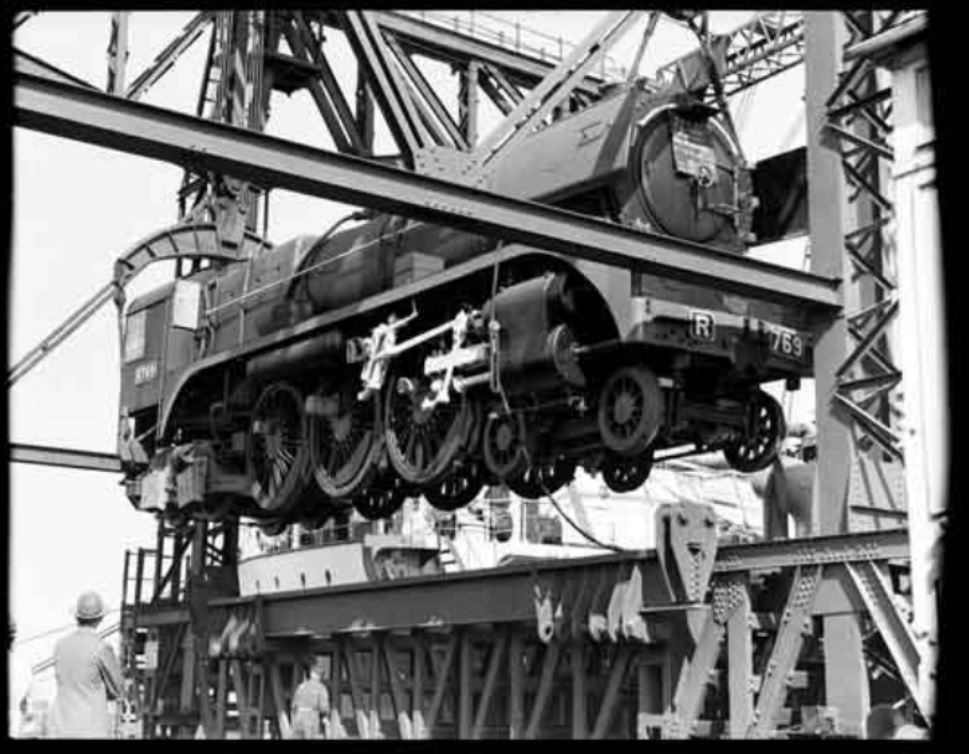
The blue Funnel Line was known for producing the best of mariners, whatever their position aboard, from able bodies on deck, to engineers below deck and watch officers, even masters on the bridge….I have no doubt Dad was trained well, and I know he loved his time aboard Helenus, of that I have never had any doubt! So, It was done, the journey had reached its end point, now all that remained was to “turn her about” and make the trip home to Gladstone No2 Dock in time for Christmas…..
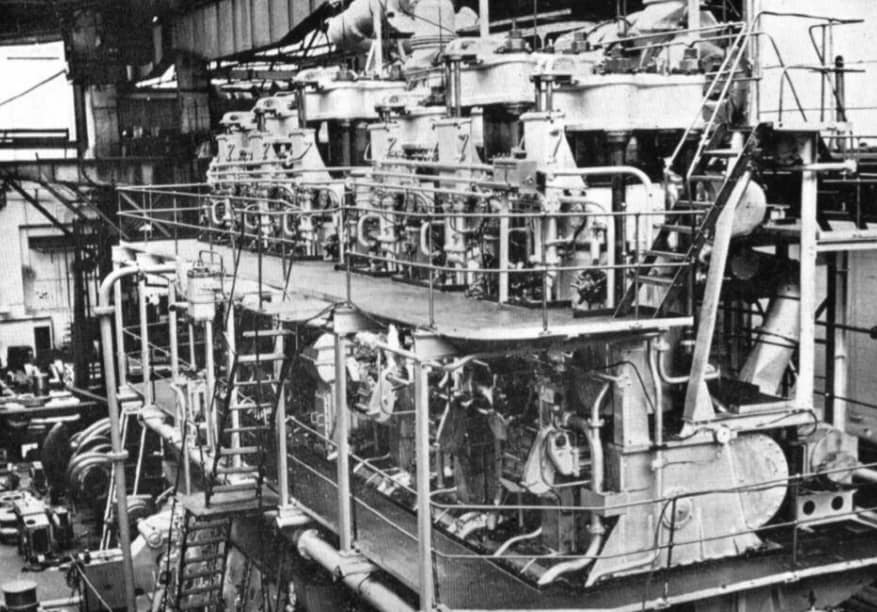
Well that would depend on the ports of call on the way back. with the locos delivered safely ashore and the various other cargoes collected, dropped off, and taken between ports of call along the Australian coast, Helenus job was far from over, there would be cargoes to take back to ports on the return journey, wool, chilled Beef and tinned fruit are all mentioned by Eric Forshaw, and more “general cargo” besides, Helenus would call at those ports she had already docked at for the return from Brisbane to Sydney
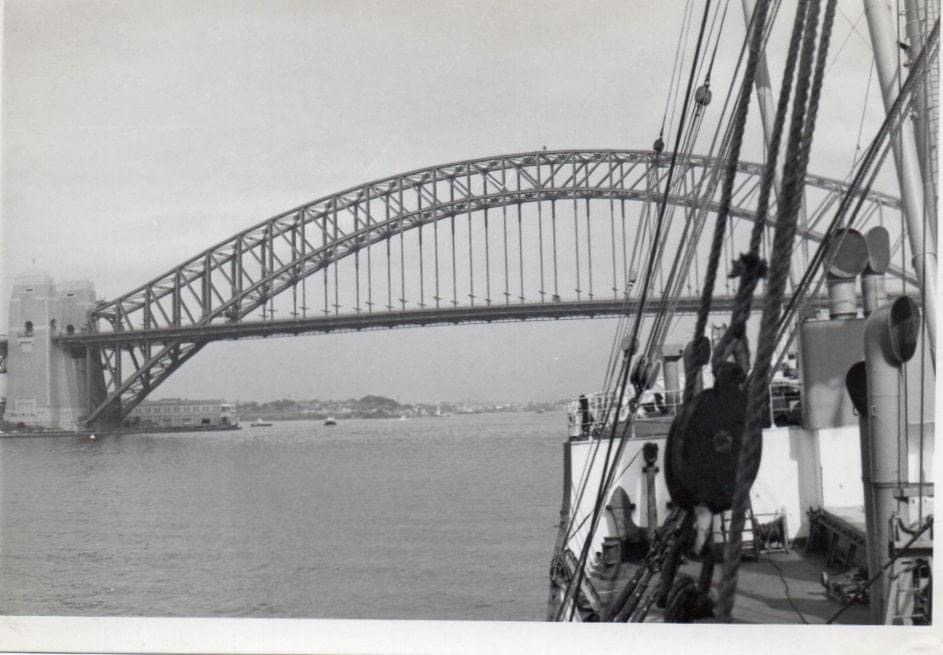
From Sydney to Melbourne, then Adelaide and Albany, then back across to Aden and Port Said, the only real difference being a call into Genoa, now Eric doesn’t elaborate on why Genoa was included but it must have been cargo related to make such a change whilst going back, I doubt Dad minded one bit, another port, another country to see and all this on your first trip out of the UK, for a cadet of 19 the Blue Funnel Line was everything a Liverpool lad might wish for, and more……..
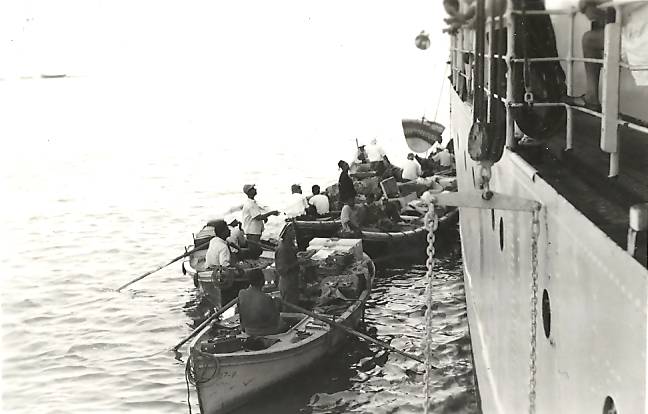
Genoa, one of the most important ports of the Mediterranean sea, and capital of the region of Liguria, is the 6th largest city in Italy and would have perhaps represented the height of European chic in 1955. Ever a nation of fashion conscious and erudite young people the Hollywood film stars of the day, at least the female film stars, were largely Italian, Silvano Mangano, Gina lollobrigida, Sophie Loren, Claudia Cardinale…. Where better for a 19 year old from Liverpool to get ashore hoping to bump into a film star…..of course that didn’t happen, otherwise I wouldn’t be here and this story would have been a very different one, but I have no doubt that is what every young man going ashore in one of the most glamorous countries of the world would think. Earlier that year, in February of 1955, Genoa had suffered a storm the like of which had not been seen in Italy for generations, wrecking 500m of the ports quayside and sinking an American ship Camas Meadows, battering her against the quayside until she holed and capsized at her berth and just a day later the Nordanland, a Swedish ship carrying Calcium Carbide exploded when her cargo became contaminated with sea water and turned into Acetylene gas, sending her to the bottom
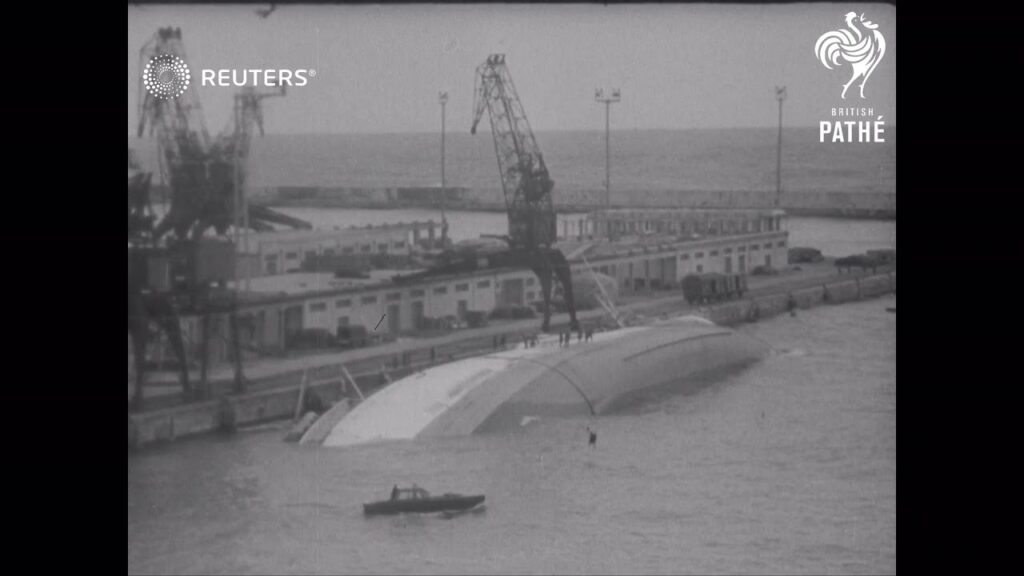
When Dad docked in Genoa it would have been the early days of December (perhaps at a push the dying days of November) of 1955 and work would have been underway, perhaps even completing to repair and make good the storm damage. Genoa being Italy’s most important port, that would have been a priority, but it is likely the hulk of the Camas Meadows would have still been a morbid attraction. Genoa might have had something far more intriguing to see if Dad had a mind, a short trip up Via San Lorenzo, to the Gothic Cathedral at the city’s centre, would have given Dad sight of something many have searched for in vain for centuries, the Holy Grail…..or so it is claimed by those believers of the Cathedral’s Treasure Museum, better known there as the “Sacro Catino” this chalice, hexagonal and all of Green glass has been there since Guglielmo Embriaco brought it to Italy from the conquest of Caesarea in 1101 AD
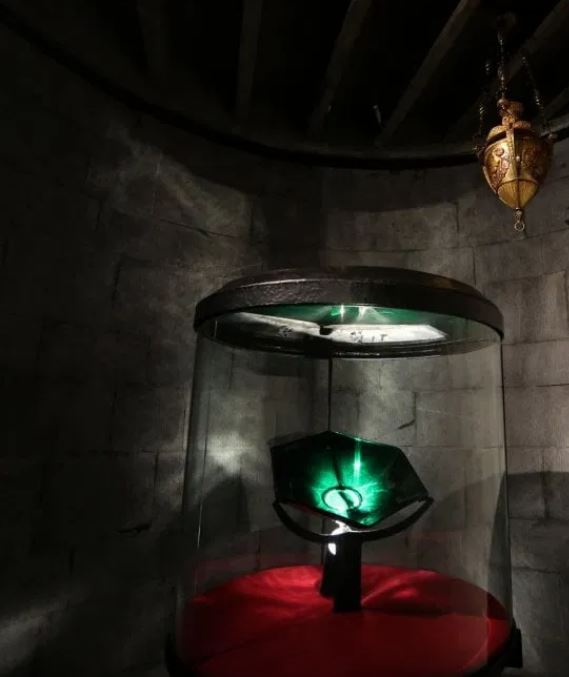
So Blue Funnel Engineering Cadet Ian Jones, at 19 years old, of Leather’s Lane in Halewood, Liverpool, has now officially travelled the world, and in the space of a mere 3 months, his first away from home, seen the miracle of the Suez Canal, and traded with Arabs in far-away Aden, the last outposts of Empire, he has met Poseidon crossing the equator and stood at the other side of the world, drunk Beer in the pubs of Sydney, spoken in hushed tones in Cathedrals, and rubbed shoulders with Italian Film stars, he has found the Holy Grail and is now homeward bound on the last leg of his journey, to sit by the four bar electric fire in the living room at my Grandfather and grandmother’s home and tell them of all he has seen as Christmas 1955 draws the family together……to listen to tales of Blue Funnels, the ships of Liverpool…..and the oceans of the world
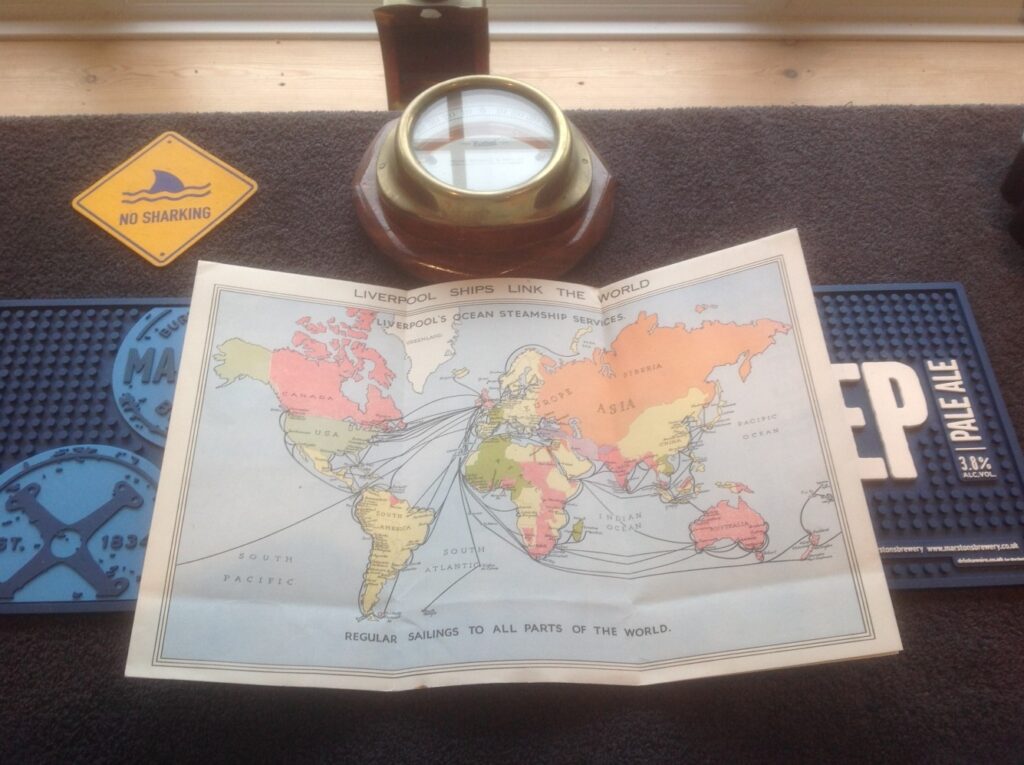
In concluding this piece, with my hand on my heart, I am immeasurably grateful for the assistance of many with the writing and content of this piece, namely: Col R. Stewart DSO, M.P for Beckenham, for his permission to use pictures of his father Squadron Leader Archibald “Jock” Stewart M.C. in Aden
Also to Eric William Forshaw, for his recollections of the Helenus trip to Australia and for the information on ports of call and cargo on her journey in 1955
Additionally to Georgie Marsh of the Blue Funnel for Old Timers Facebook pages for his kind permission to use his photos of various Blue Funnel ships and memories from the time
I will remain indebted to those who have supplied or posted pictures used which have no formal attribution, having often been with me for many years providing insight into my Fathers Journeys around……. Thank You All!
